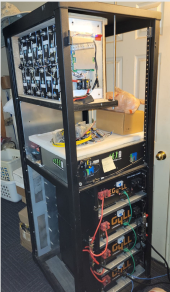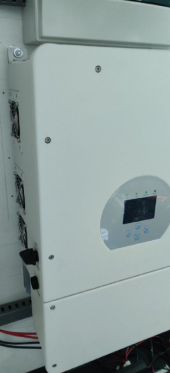Hedges
I See Electromagnetic Fields!
- Joined
- Mar 28, 2020
- Messages
- 20,535
Hi great thread , I’m having the same issue f-20 . I checked the panel polarity before connecting to inverter and it was correct. But while wiring tonight I learned the hard way about backfeed . The panels were disconnected but the deye was on . While wiring in the pv to the mppt I got bit bad . Took me a while to find where it is coming from but from ground ( case of inverter ) to any mppt input ( pos or neg) I have 244 vdc . My arm is still hurting it hit me so hard . Why does the input have a voltage 244 vdc lower than the case ? Seems like rsd would be worthless because the inverter would backfeed
I think the Deye, if similar to Sol-Ark, has a high voltage DC rail. PV feeds high voltage rail from which AC is made (rather than conversion first to battery voltage), battery is boosted to same high voltage rail, or charged from it. For models which AC couple, AC also goes to high voltage DC before charging battery. Likely AC line input does too.
I would expect a separate PV connection with MPPT circuit charging that rail, and not backfed, but maybe not?
As you note, RSD boxes between panels can't do anything about voltage on wires from inverter. Although, if RSD is activated by inverter, that may discharge those wires.
Working on my GT PV inverters, after disconnecting AC and DC I have to wait a while for capacitors to discharge on DC side. That is much slower than RSD requirement, so would require additional circuitry or operation of inverter into a load.
One Deye I looked up specs for accepts 100 to 500V input. The circuit would be buck/boost to work around 244VDC.
Although there is a diode in buck-boost topology, it might leak to charge up capacitor.
Now you know to check all voltages with meter before working on it.






